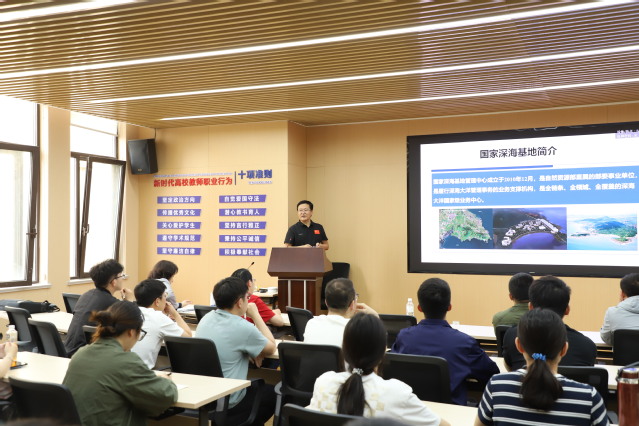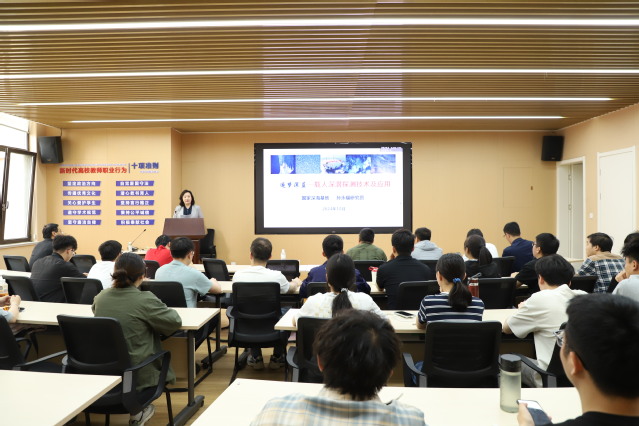On May 30, Sun Yongfu, former Deputy Director, and Second-Level Researcher of the National Deep Sea Center, was invited to the School of Materials Science and Engineering to deliver an academic lecture and participate in a discussion on the R&D progress of key operational materials for the Jiaolong submersible. Vice President Wang Houjie of the university attended the symposium, while Dean Cui Hongzhi presided over the lecture and discussion.
Cui Hongzhi extended a warm welcome to Sun Yongfu and accompanied him on a tour of the Extreme Environment Materials Laboratory and the Analysis and Testing Center, introducing the school’s key research directions and ongoing projects.
Sun Yongfu delivered an academic lecture titled Manned Deep-Sea Exploration Technology and Its Applications for faculty and students. The presentation vividly showcased the center’s major achievements in deep-sea mineral and biological resource exploration over the years, covering four aspects: the deep sea and its resources, deep-sea equipment and exploration capabilities, key research outcomes, and future prospects. He also highlighted the material requirements for the next phase of development, including high-strength, corrosion-resistant, and wear-resistant materials for critical components such as submersible structures, manipulators, and underwater tools, which must withstand extreme pressure, high temperatures, and acidic/alkaline environments in deep-sea hydrothermal zones. During the Q&A session, attendees actively engaged, discussing material needs, damage protection, and challenges related to deep-sea extreme environments, core submersible components, and mineral extraction.

Sun Yongfu delivering the academic lecture

Scene from the lecture
During the symposium, Cui Hongzhi’s team presented their analysis of key submersible component damage and proposed material and technological optimization solutions based on prior discussions. They shared experimental results on strengthening the toughness, wear resistance, and corrosion resistance of the Jiaolong’s titanium alloy tripod landing legs and aluminum alloy valve cover plates, as well as progress in lightweight thermal insulation aerogel and hydrophobic/hydrophilic modifications for the cockpit. Both sides also discussed equipment material localization, scientific collaboration, resource sharing, and talent development, reaching a consensus on future cooperation. They look forward to leveraging their respective strengths to advance deep-sea equipment materials technology and talent cultivation.
Text: Chen Hao
Photos: Li Wei


